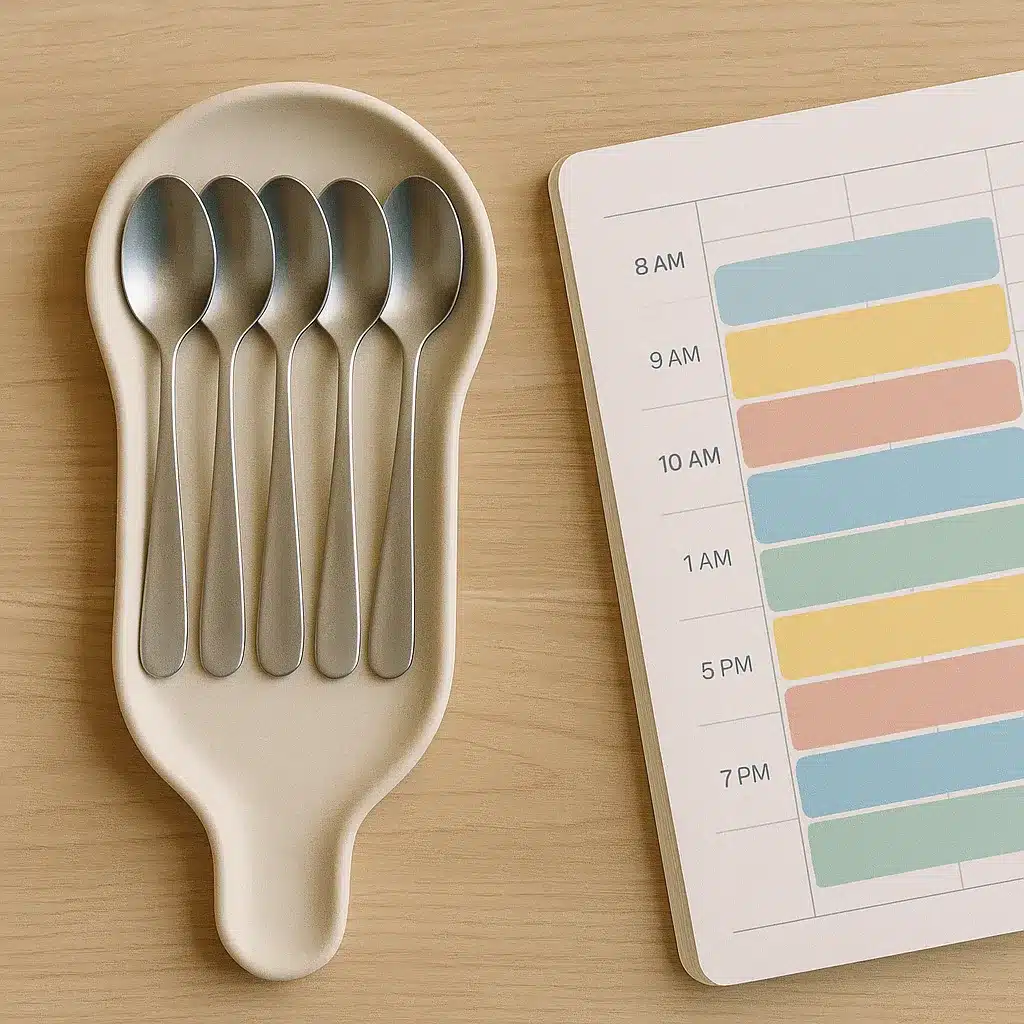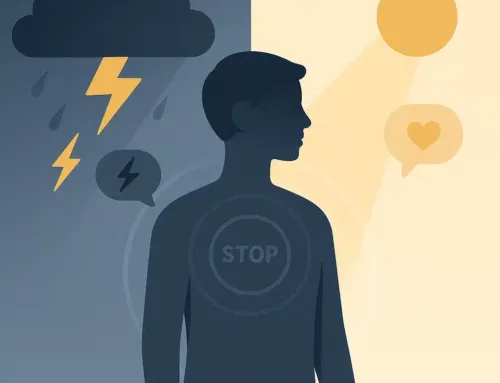
Approx. read time: 7.7 min.
Post: Personal Daily Capacity: A Real-World Guide to What You Can Handle Each Day
What I Learned About Personal Daily Capacity (So You Can Find Yours Too)
We all have a limit to what fits in a day. I didn’t know mine—until I burned out. This article shows how I discovered my personal daily capacity, and how you can measure and protect yours. We’ll blend lived experience with research, then turn it into a simple daily plan you can keep.
🧪 The Week That Broke Me (and Taught Me My Limits)
Three client deadlines, family commitments, and a “harmless” list of small tasks. I told myself it would be fine. By Wednesday, my mind felt foggy and my patience was paper-thin. On Friday morning I stared at my screen for twenty minutes, unable to decide which email to open first.
That week forced me to ask a better question: not “How can I cram more in?” but “What can I genuinely handle day to day?” That’s personal daily capacity—your real, repeatable limit.
🧩 What “Personal Daily Capacity” Really Means
Personal daily capacity is the amount of cognitive, emotional, and physical effort you can spend in a single day and still feel human tomorrow. It’s not just hours. It’s effort intensity + recovery.
Why it matters:
-
If you exceed your personal daily capacity today, you pay interest tomorrow.
-
When you respect personal daily capacity, consistency becomes easy.
-
Your capacity shifts with sleep, health, stress, and season. Plan for that.
We’ll use the phrase personal daily capacity throughout so you can track and tune it.
🧠 The Science: Stress, Switch Costs, and Energy Waves
Several findings explain why days feel “full” before the calendar does:
-
Task-switching costs capacity. Even brief switches slow you down and compound over time; it’s small per switch, large in total (American Psychological Association). American Psychological Association+1
-
Burnout is real—but it’s about chronic, unmanaged stress. WHO classifies burnout as an occupational phenomenon, not a disease. It presents as exhaustion, distance, and reduced efficacy. Respecting capacity helps prevent it. World Health Organization+1
-
Stress levels have climbed in recent years. Major polls show rising anxiety and stress across adults—another reason to guard your daily load. American Psychological Association+1
-
Energy comes in waves. Humans tend to cycle through ~90-minute ultradian rhythms. Working with these cycles makes capacity go further. Wikipedia+1
Takeaway: personal daily capacity is limited by switch costs, stress, and your energy rhythm. Design your day to work with your brain, not against it.
🧮 Find Your Number: A 5-Step Self-Audit
You’ll estimate your personal daily capacity in “effort units” and convert it to time blocks.
-
Baseline yesterday. List what you did (work blocks, errands, family, admin). Mark each as Light / Medium / Heavy effort.
-
Tag recovery. Note sleep, breaks, food, short walks. Recovery expands personal daily capacity tomorrow.
-
Rate drain (1–5). After each block, how depleted did you feel? Use instinct, not perfection.
-
Add it up. Heavies = 3 units, Mediums = 2, Lights = 1. Most people sustain 8–12 units without crashing.
-
Pick a conservative cap. Start at 10 units for a week, then adjust. That’s your first personal daily capacity cap.
If your health varies or you manage chronic conditions, consider a sliding cap (e.g., 8 units on low-energy days, 12 on high-energy days). This respects your personal daily capacity across real life.
🗓️ Build a Capacity Budget
Allocate your daily units before the day starts. Example below:
| Block | Time | Task Type | Effort Units | Notes |
|---|---|---|---|---|
| Deep Work 1 | 09:00–10:30 | Writing / design | 3 (Heavy) | Phone off, single tab |
| Admin | 10:45–11:30 | Email / tickets | 1 (Light) | Batch replies, 45 min |
| Deep Work 2 | 12:30–14:00 | Build / analysis | 3 (Heavy) | Calendar blocked |
| Collab | 14:15–15:00 | Meeting / review | 2 (Medium) | Agenda + timer |
| Ops | 15:15–16:00 | Docs / filing | 1 (Light) | Template use |
Total: 10 units. If a new request appears, you either swap something out or schedule it tomorrow. That keeps personal daily capacity intact.
⏱️ Timeboxing With Energy—Not Just Time
Timeboxing means putting tasks into calendar blocks. The twist here: match blocks to your energy peak (morning? afternoon?) and to ultradian cycles (~90 minutes) for deep work. This increases output without exceeding personal daily capacity.
Evidence and guides on timeboxing exist across respected outlets and universities; using calendar-based blocks improves focus and realistic planning. Harvard Business Review+2humanresources.illinois.edu+2
Quick start: two 90-minute deep-work boxes, one 45–60 minute admin box, one 45-minute collaboration box. Protect them like meetings.
🔀 Stop Multitasking: Single-Task to Save Capacity
Every context switch burns a little time and a lot of clarity. Over a day, the “switch tax” can eat a shocking chunk of your personal daily capacity. Single-task inside your timebox, keep one window visible, and group similar actions together. American Psychological Association+1
🧯 Early Warning Signs You’re Over Capacity
-
You postpone small, easy tasks for days.
-
You skim emails three times without replying.
-
Tiny decisions feel heavy.
-
You wake up tired after a “normal” day.
-
People around you notice irritability or distance.
If this sounds familiar, your personal daily capacity is being exceeded.
🏗️ Design Your Day by Load (Heavy → Medium → Light)
-
Do heavy cognitive tasks at your natural peak.
-
Place meetings after a heavy block, never before it.
-
Batch admin near day’s end.
-
Insert micro-recovery (5–10 minutes) between blocks to reset attention.
This sequencing aligns with energy cycles and protects personal daily capacity. Wikipedia
🧰 Tools & Rituals That Help
-
Calendar timeboxing: Put work into blocks with alarms.
-
App limits: Hide icons, silence notifications in deep work.
-
Template replies: Reduce decision fatigue for routine messages (decision fatigue is debated; still, reducing trivial decisions helps). fmch.bmj.com+1
-
Recovery anchors: 10-minute walk, water, snack, short stretch.
🛡️ Boundaries That Protect Capacity (Use These Scripts)
-
Swap script: “Happy to do X today. Which of Y/Z should move to tomorrow?”
-
No-meeting mornings: “I keep 9–11 reserved for build work so we hit deadlines.”
-
Email guardrail: “I check messages at 11 and 15:30—if urgent, text me.”
-
Buffer ask: “This needs two heavy blocks. Can we set the due date for Thursday?”
These micro-scripts keep personal daily capacity intact without friction.
🌦️ If Your Energy Varies Day-to-Day
Some days start with fewer “spoons,” especially if you manage chronic illness or fluctuating energy. The Spoon Theory offers a helpful lens: plan for limited units and spend them intentionally. Adjust your personal daily capacity cap on low-spoon days and pre-commit to recovery. butyoudontlooksick.com+1
📈 Track, Review, Adjust (10-Minute Weekly Loop)
-
Every day: Mark blocks done vs. slipped. Note drain level (1–5).
-
Weekly 10: What over-ran? What restored you? Shift next week’s blocks.
-
Monthly: If your average day exceeds your cap, lower the cap by one unit for two weeks and re-test. Sustainable > heroic.
This loop evolves your personal daily capacity with your life.
❓ FAQs
Q1. How many hours equal a healthy personal daily capacity?
There’s no universal number. Most people sustain two deep-work cycles plus light/medium tasks—about 4–6 focused hours inside an 8-hour day. Protecting recovery matters more than raw time. (See ultradian rhythm research.) Wikipedia
Q2. What if my job is meetings all day?
Batch meetings into “corridors,” leave one protected deep-work block daily, and push decisions into shared docs ahead of time. This reduces switch costs and preserves personal daily capacity. American Psychological Association
Q3. Is decision fatigue real?
Findings are mixed. Some studies show effects in clinical settings; others find little or no effect at scale. Either way, fewer trivial choices free capacity. Use defaults, checklists, and templates. fmch.bmj.com+2Taylor & Francis Online+2
Q4. How do I handle unpredictable days (kids, clients, crises)?
Keep 20–30% capacity unbooked. Treat it as a buffer. If unused by 3 p.m., spend it on admin or learning.
Q5. Can I raise my personal daily capacity?
Yes, modestly—via sleep, fitness, nutrition, and stress hygiene. But the goal is consistency, not constant increases. (WHO frames burnout as chronic, unmanaged stress—avoid that.) World Health Organization
Q6. What if I’m already burned out?
Lower your cap, increase recovery, and negotiate scope. If symptoms persist, consult a licensed professional. (WHO/ICD-11 recognizes burnout as occupational.) World Health Organization
Q7. Does multitasking ever help?
Only for truly automatic tasks (e.g., folding laundry + podcast). For knowledge work, single-tasking wins most days. American Psychological Association
Q8. How do I explain this to my team?
Share the capacity budget table and the swap script. Agree that if a new priority enters today, something exits today.
✅ Conclusion: Make Capacity Your Default
The day goes better when you plan for what you can truly carry. Define your personal daily capacity, build a simple budget, and protect it with timeboxing, single-tasking, and small recovery rituals. Do that for two weeks and you’ll feel the difference—steady progress without the crash.
🔗 Sources & References
-
American Psychological Association — Multitasking: Switching costs. American Psychological Association
-
WHO — Burn-out in ICD-11 (occupational phenomenon). World Health Organization
-
APA — Stress in America 2024 (population stress overview). American Psychological Association
-
Ultradian rhythms / BRAC overview. Wikipedia
-
AMA — What doctors wish patients knew about decision fatigue (overview). American Medical Association
-
Clinical/field research on decision fatigue (mixed evidence). fmch.bmj.com+1
-
Spoon Theory origins (Christine Miserandino). butyoudontlooksick.com









